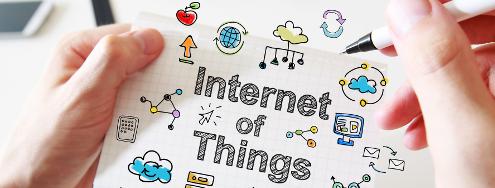Since the days the first computers were built – then huge machines – one of the main goals of engineers involved in their design was to increase their capacity while simultaneously minimising the size of the devices. Over the years those efforts resulted in a situation in which the majority of functionalities offered by a classical PC are now offered by, for instance, Smartwatches – intelligent watchers with access to the Internet – meant for everyday use. Alongside with the development of computers themselves, the market for smaller devices has been growing dynamically, abundant with devices equipped with sensors receiving data from the surrounding, for example, information on temperature or air humidity. What was very important for the Internet of Things market was also development in the area of solutions facilitating two-way communication between, for example, low energy Bluetooth, or RFID. The technological revolution which facilitated mutual communication between electronic devices of all kinds requires a specific language, therefore, the entire environment briefly mentioned above has been given a name of the Internet of Things. Solutions which were until recently only present in science fiction movies are slowly being introduced into our reality. House temperature remote control, or monitoring basic life parameters in elderly people who live alone and automatic notification of emergency services when there are serious deviations from the norm is today not merely a projection of the future. Internet of things is finding new usage in nearly every area. We are talking, for example, about managing industrial production, modernising logistics, solutions improving security or saving energy in the construction industry. On the other hand, there are some very interesting developments in marketing and advertising, namely emergence of the so-called Beacons – small devices fitted, for example, to shelves in supermarkets. They supply the customer with personalised advertising messages and provide real-time offers when a customer visits a shop. The Internet of things can also solve problems of many municipalities. According to research, about 30% of traffic jams are caused by drivers looking for parking spaces. Placing sensors in parking lots in city centres could allow drivers to plan where they are going to park before they set off for the journey. Internet of things devices are going to be soon utilised also to monitor traffic intensity. Systems designed with the support of such devices in mind are going to replace the police who usually direct traffic is in critical situations, because such devices can do it faster and more effectively. An interesting illustration of omnipresence of the Internet of Things is an example of a start-up which equipped cows with sensors monitoring their different life parameters. Each cow generates about 200 MB of data a year, on the basis of which it is possible to conclude whether or not the animal is pregnant or ill. The capacity offered by available Internet of Things devices forces us to change the way we think about the surrounding, everyday life and innovations. Eric Schmidt, Google CEO said that “By the end of the decade, everyone will be connected”. The revolution which we are witnessing is given catchy names such as d!conomy or digital economy, or Industry 4.0. It is estimated that by the year 2020 about 25 billion devices will be connected, while the commonly known computers, smart phones or tablets will constitute only 30 million of that number. Wearables are dynamically entering the market which, thanks to increasingly better voice control and intuitive interfaces, are becoming incredibly useful. Within the next few years the Internet of things market turnover can reach a trillion USD, most of which will be devoted to solutions dedicated to construction, towns and industry in general. Internet of Things magic reaches much further than a simple connection between devices in order to exchange single pieces of information. The intensely developed network is going to generate incredible numbers of data requiring processing in order to gain information translatable into real business value. Today already many solutions are being developed in the area of Big Data, facilitating operations which, until recently, had been very costly and time-consuming, and now are performed in a much shorter time and a lot cheaper. The data are no longer only a basis for generating statistical reports or even abundant visualisations. Services based on technologies which quite recently were only to be found in academic laboratories are now entering the market. Machine Learning systems, which are able to learn while monitoring our everyday activities, are becoming more and more common. What does this mean in real terms? For example, applications controlling intelligent houses on the basis of the gathered data can suggest to users how to change their habits in order to save on electricity and heating. Data generated by the Internet of Things are precious also thanks to such technologies as Predictive Analytics. This type of solution is useful while forecasting demand for goods, not to mention Data Mining which allows for recognising all kinds of patterns in data. The Internet of things market is going to develop dynamically. The future will show which solutions are going to become popular and which, to the contrary, are going to prove completely useless. We, as a society, are facing huge challenges because the said revolution will be related to never-ending struggle for private data protection. Doubtless, very interesting times for IT are coming. Check also our blog
